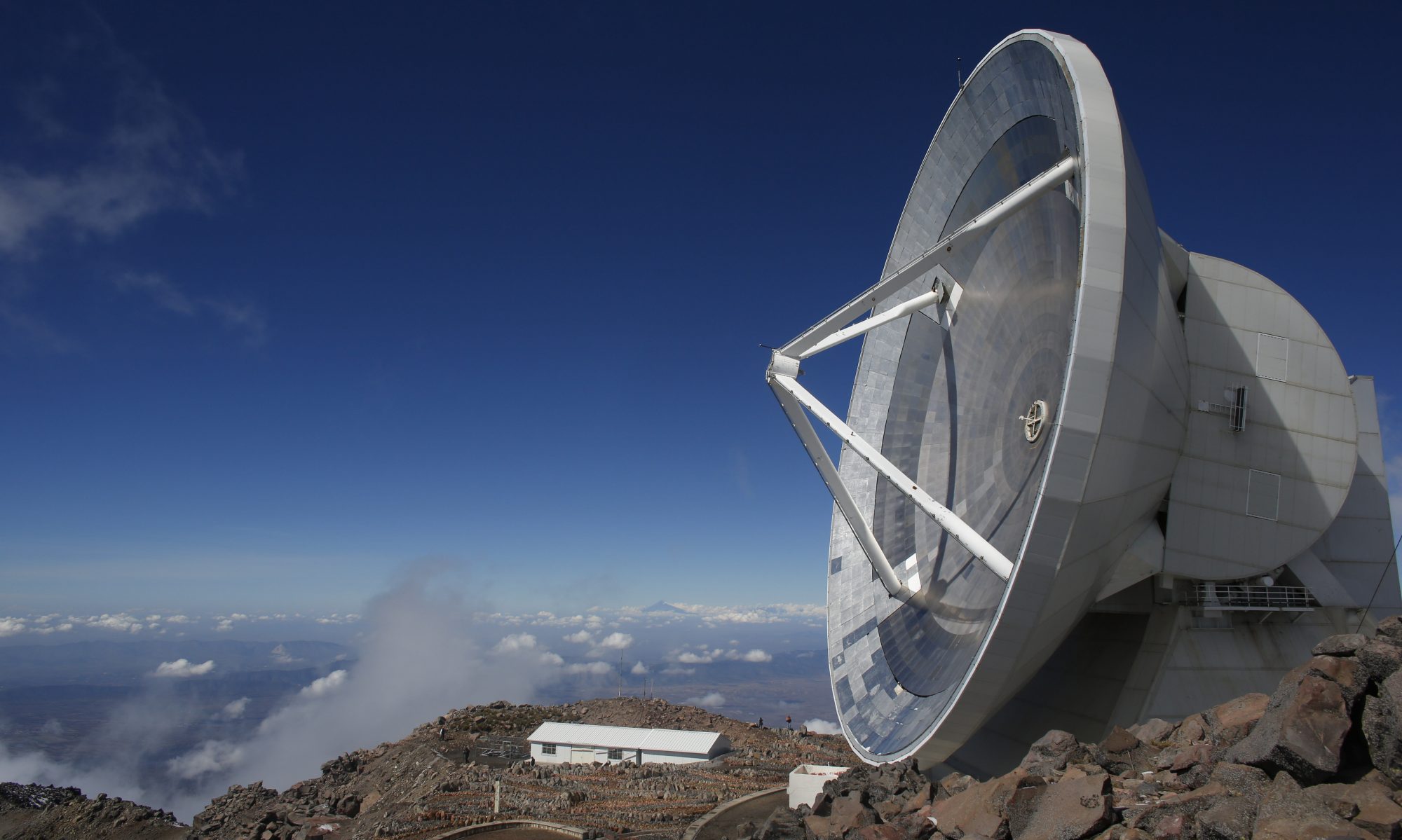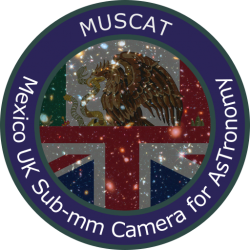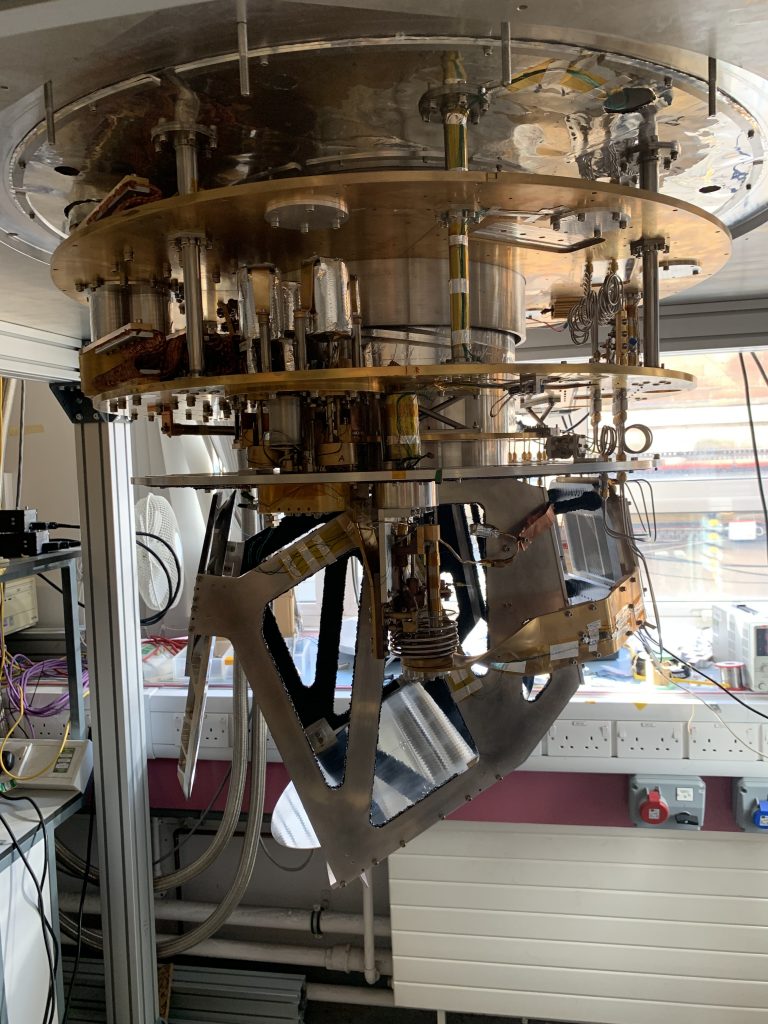
MUSCAT Cryostat
The circular gold plates are the cooled to -223°C (top plate) and -269°C (bottom plate). Two mirror focus light to the detectors which are cooled to 0.12°C above absolute zero.
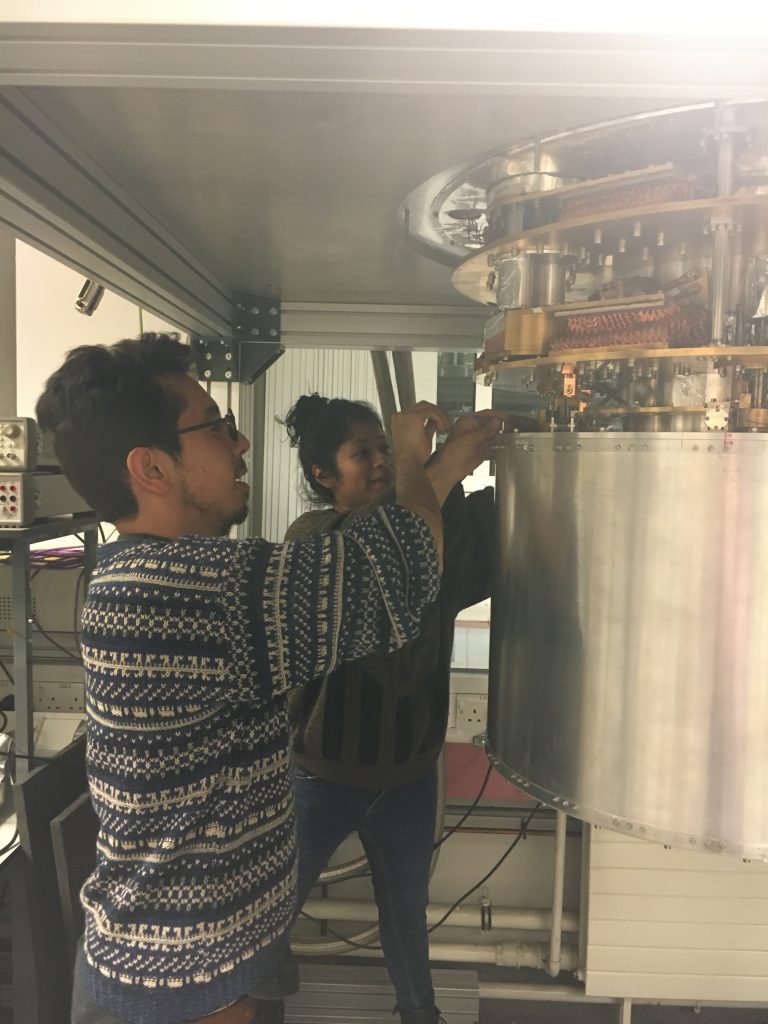
Mexico-UK Collaboration
Several researchers from Mexico have visited Cardiff to design, build and test MUSCAT. Here Dulce Murias and Marcial Tapia (both INAOE) are closing the cryostat for a performance verification test
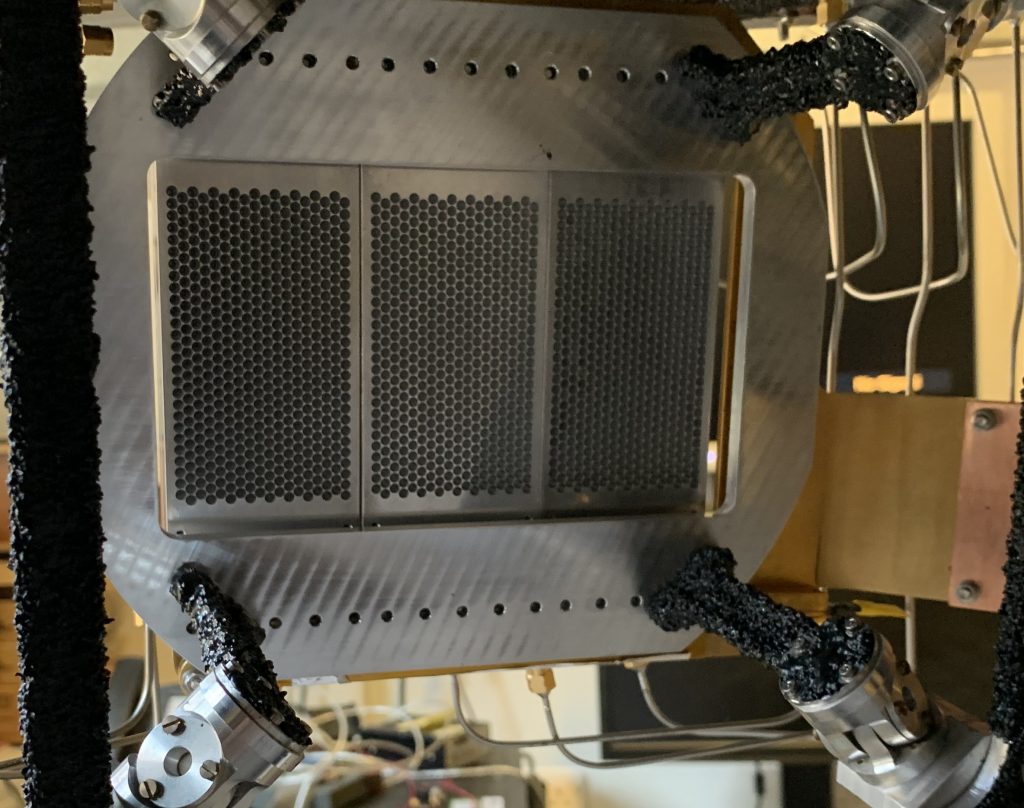
Horn Blocks
The MUSCAT detector arrays are housed in three modules with a total of 1,500 custom made horns which collect the light for each pixel.
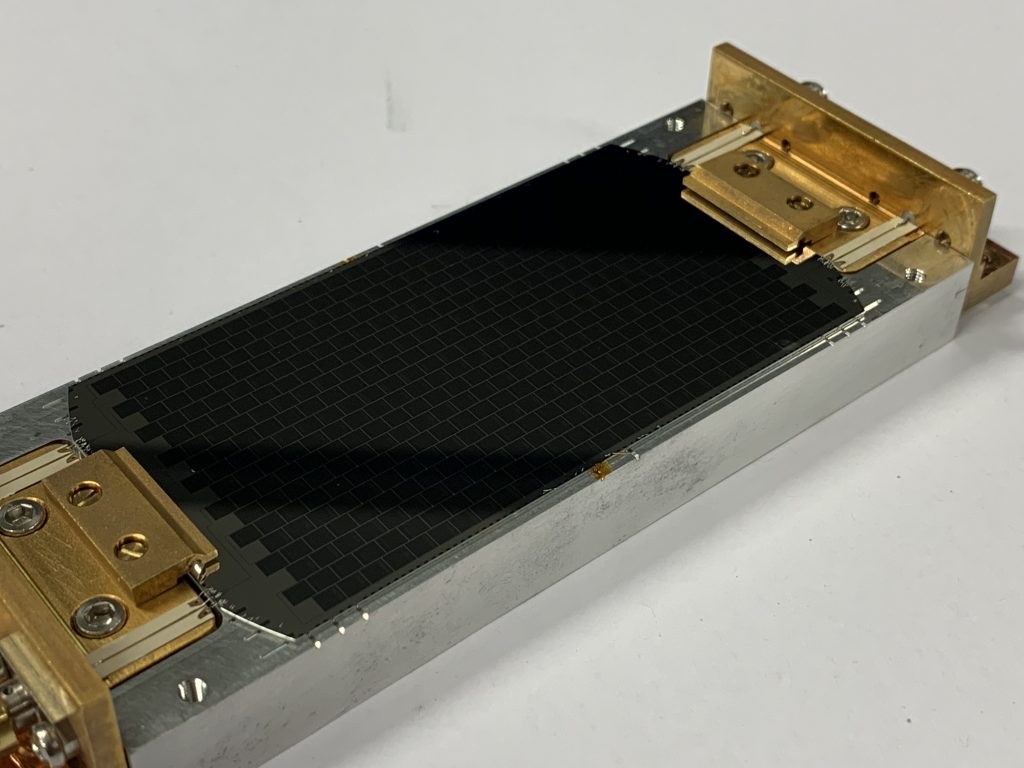
Detectors
MUSCAT has 1,500 detectors called LEKIDs (lumped-element inductance detectors). Each grey square is an individual detector. There are 500 in this picture.
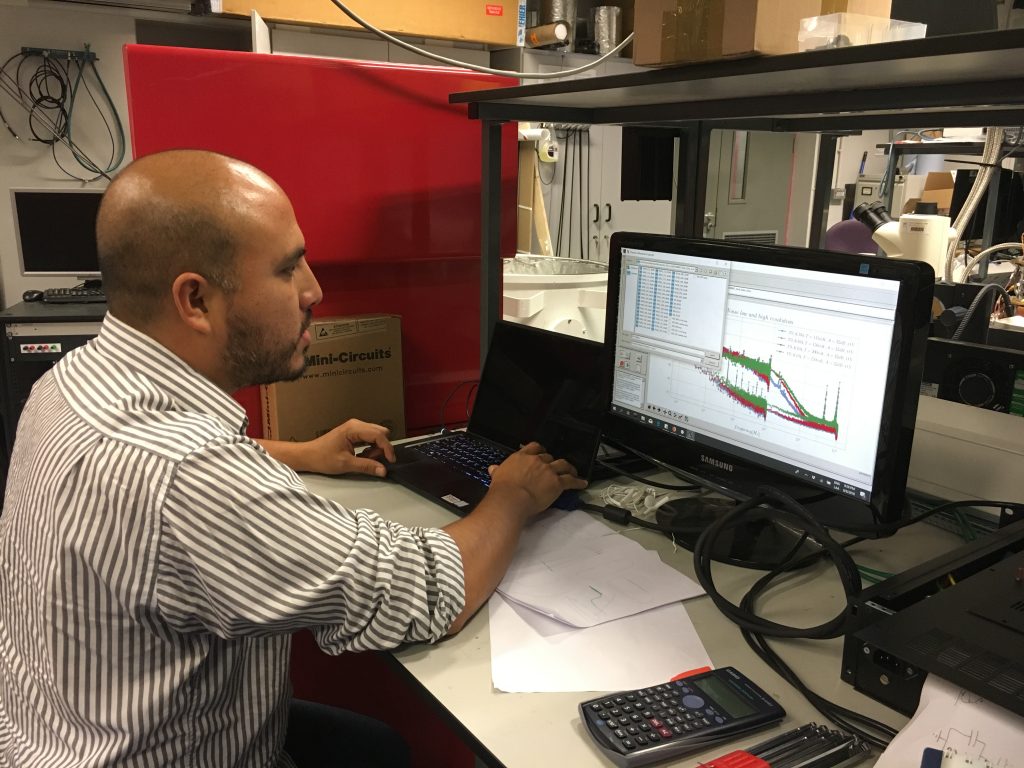
Data Analysis
Salvador Ventura (INAOE) looks at sensitivity data to help determine the final performance of MUSCAT.

System Verification
Sam Rowe and Tom Brien (both Cardiff University) look at live data streams to confirm operation.
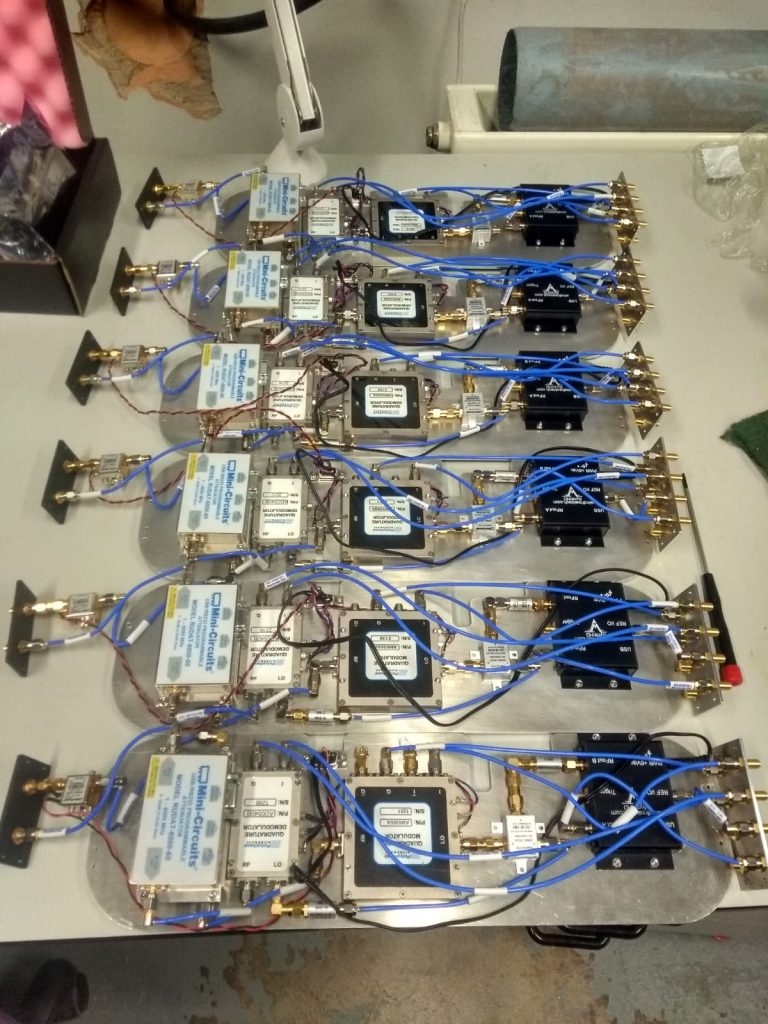
Readout
MUSCAT uses a custom built readout system. These six cards each allow 250 pixels to be read out and were assembled by Marcial Tapia (PhD Student at INAOE, Mexico).

Filters
MUSCAT contains multiple custom filters which select the wavelengths of light absorbed by the detectors. These are made specially in the Cardiff Filters clean room facility.
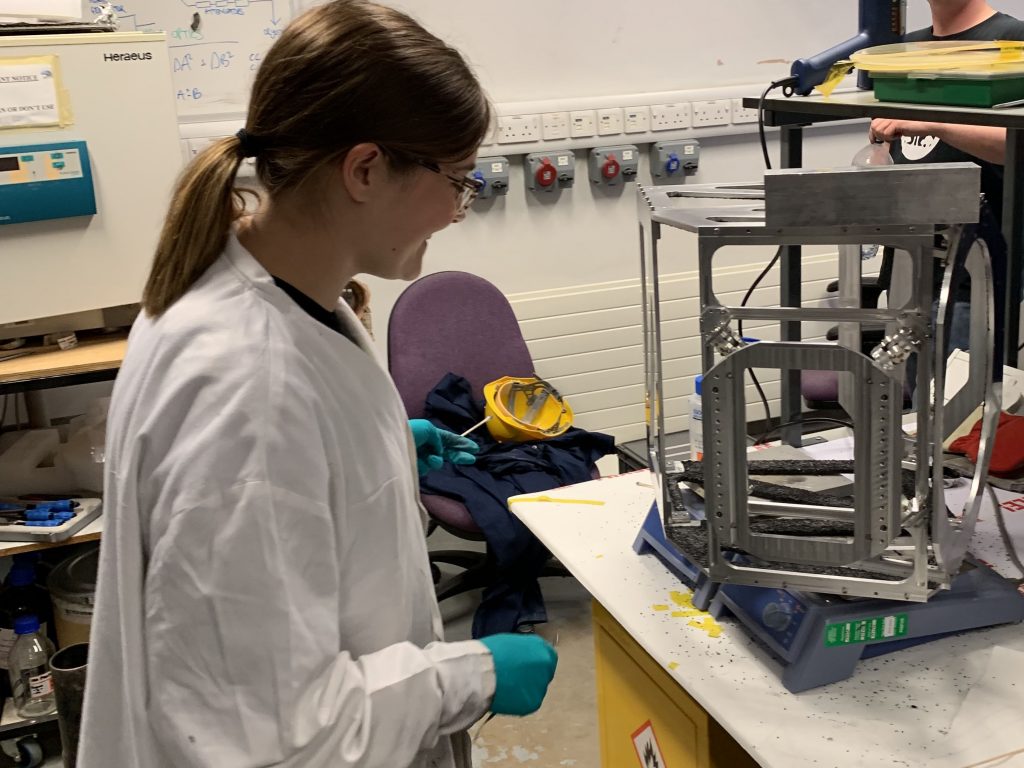
Custom Built
The structure of MUSCAT has been made specifically for the project. Here Amber Hornsby (PhD Student, Cardiff Univsity, UK) is a applying an black coating to absorb stray light at the -272.7°C mirror stage
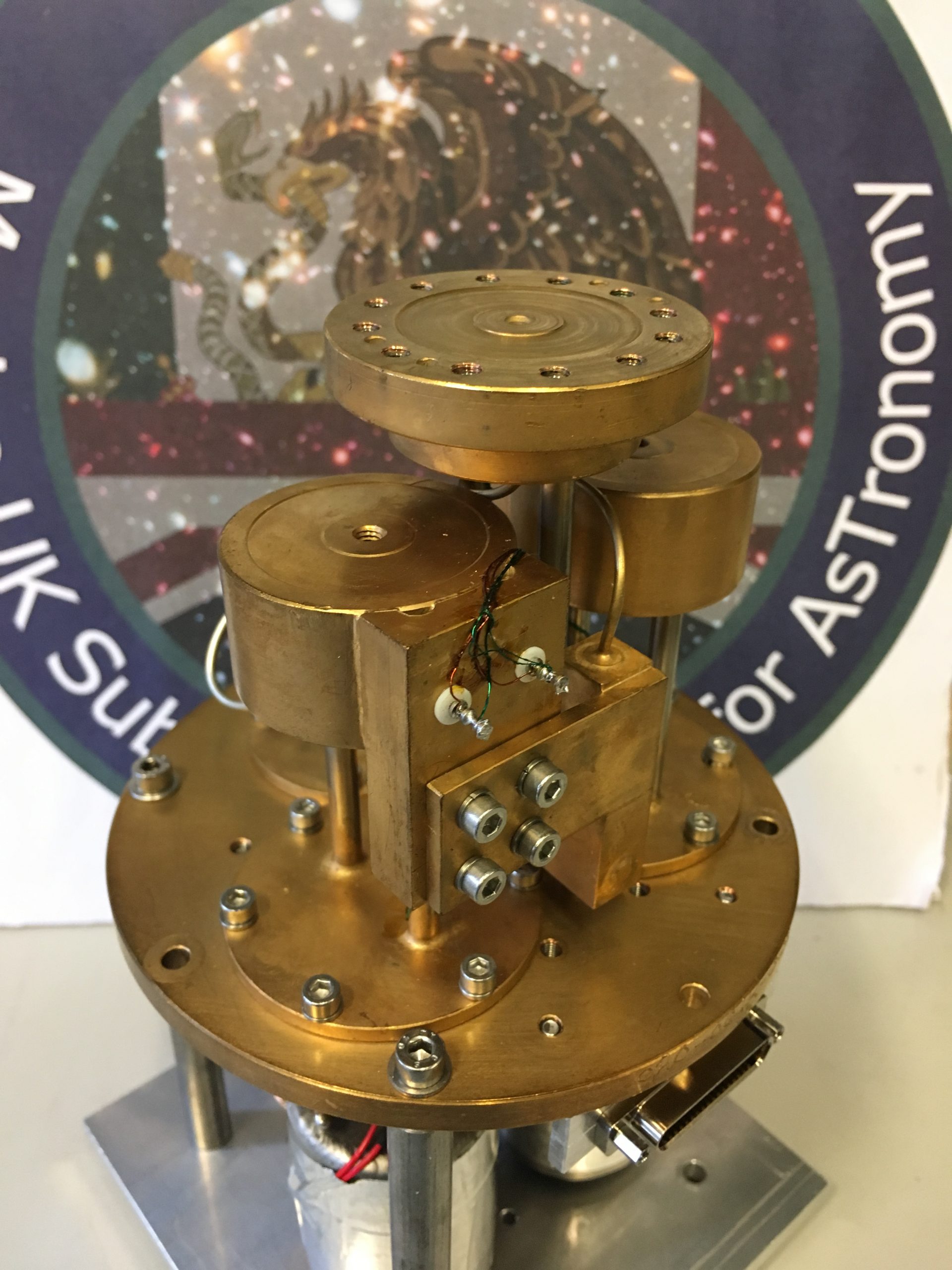
Bespoke Cooling
MUSCAT has a bespoke cooling system, developed between the MUSCAT team and Chase Research Cryogenics. This cooler provides continuous cooling of a support structure to -271.5°C. The final detector temperature is -273.03°C (just 0.15°C above absolute zero).
